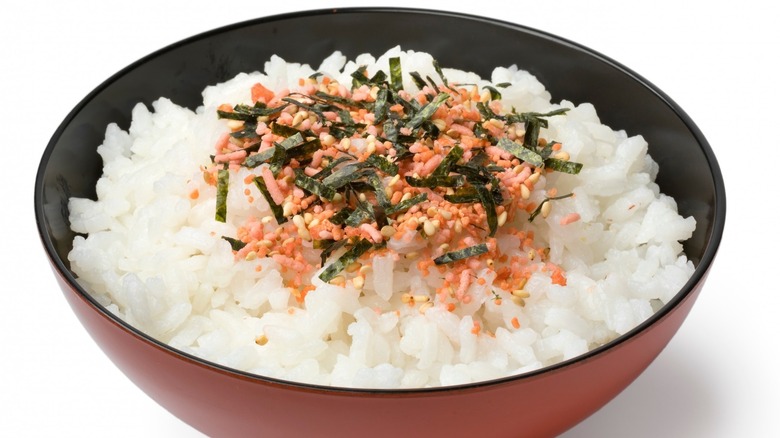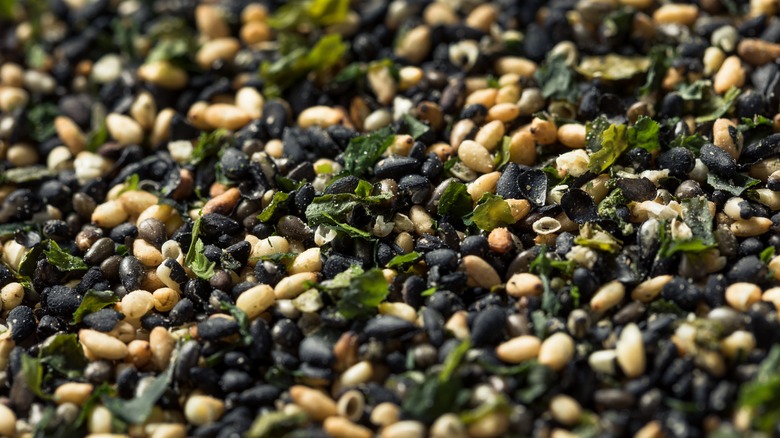Why Was Furikake Invented?
Sushi cravings are different types of cravings. It's the thing you want to eat when looking for something light and fresh, but also rich and surprising, as some sushi rolls often carry spicy and fishy flavors. This is just a small part of the many delights of Japanese food. As SBS describes, Japanese cuisine is elegant and light, as chefs try to create dishes in the most natural way possible. The cuisine is famous for featuring raw fish, known as sashimi, side sauces, spice, and umami textures and flavors.
Although it may feel like miles away, Japanese food is closer than ever. Not only at the acclaimed restaurants that we can find in the states, but for the number of Japanese ingredients that can star in our kitchens, from sauces to condiments. One very popular spice is a blend known as furikake (yes, you can find it at Trader Joe's).
This is a savory condiment mix that typically includes nori flakes (from dried seaweed), sesame and poppy seeds, dried egg, dried fish, herbs, salt, and sugar (via The Spruce Eats). The name means "to sprinkle over" in Japanese, and it usually gets sprinkled over rice. You are probably wondering how this mix came to be, isn't the cuisine quite savory already? Well, the story is linked with nutritional motivations.
Furikake was made to add more calcium
As told in Sushi Chef Stories, furikake was created by a pharmacist as a nutritional supplement, specifically a calcium supplement. Calcium helps the body to move muscles, circulate blood, and more (via Healthline). Before the early 1900s, the population in Japan was growing, and the country was experiencing a military expansion, causing a lack of food and, therefore, calcium deficiency. The pharmacist, named Suekichi Yoshimaru, created a supplement with ground fish bones. Does it sound a bit yucky? He thought the same thing. So, he mixed it with the rest of the ingredients, like nori seeds, and called it "a friend for rice," to boost its use over rice (per Sushi Chef Stories).
Over time, the furikake recipe developed and changed a bit. There was a retailer that added dehydrated soy sauce, and others that thought of an egg flavor. It was in 1959 when the name "furikake" became a thing, according to Sushi Chef Stories. Of course, furikake can be part of more dishes than just rice. This versatile condiment can be sprinkled over a salad, guacamole, sashimi, fries, kettle corn, poke bowls, baked salmon, and even avocado toast, as She Knows suggests. This sprinkler not only adds flavor but enhances the nutritional value of every plate. While we'll work on pronouncing it correctly (pronounced "FOO-ree-kaw-kay"), we can definitely consider furikake a perfectly healthy add-on!

